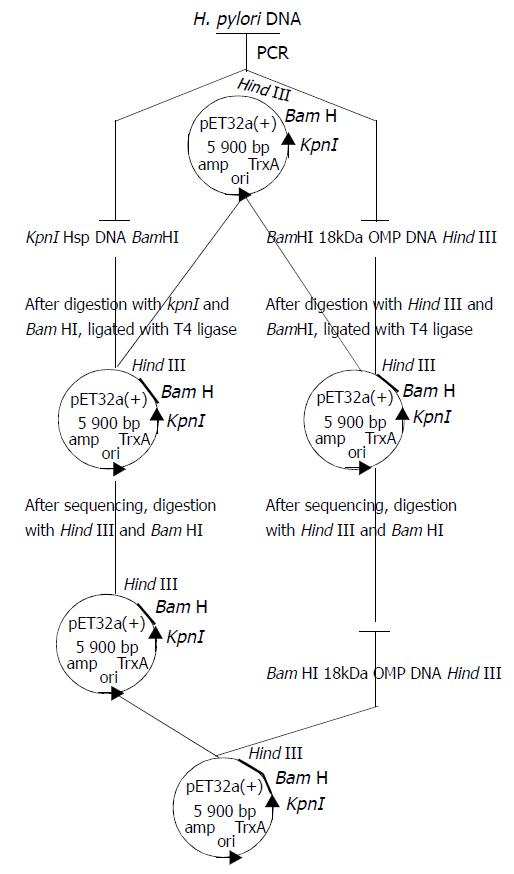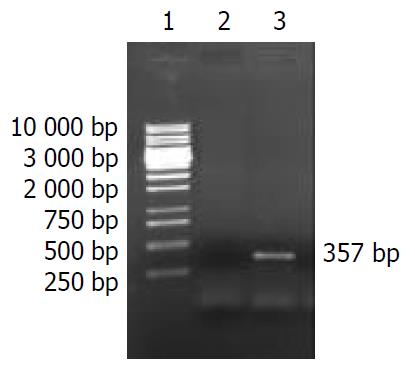Copyright
©The Author(s) 2003.
World J Gastroenterol. Aug 15, 2003; 9(8): 1756-1761
Published online Aug 15, 2003. doi: 10.3748/wjg.v9.i8.1756
Published online Aug 15, 2003. doi: 10.3748/wjg.v9.i8.1756
Figure 1 Schematic construction of plasmid pET32a(+)/HspA-Omp18.
Figure 2 10 g·L-1 agarose gel electrophoresis of HspA DNA fragment amplified by PCR from Helicobacter pylori.
Lane 1. PCR marker, Lane 2. Negative control, Lane 3. PCR products.
Figure 3 The identification of recombinant vector by PCR.
Lane 1. DNA Marker, Lane 2, 3. PCR products with the template of Top10/recombinant vector, and recombinant vector respectively, Lane 4. Negative control.
Figure 4 Identification of recombinant plasmid by restriction enzyme digestion.
Lane 1. pET32a(+)/HspA digested by BamHI, Lane 2. pET32a(+)/HspA-Omp18 digested by BamHI, Lane 3. DNA marker, Lane 4. pET32a(+)/HspA-Omp18 digested by BamHI and Hind III simultaneously, Lane 5. pET32a(+)/ HspA-Omp18 digested by kpnI, BamHI and Hind III simultaneously.
Figure 5 150 g·L-1 SDS-PAGE of total protein in recombinant vector expressed in BL21 E.
coli. Lane 1. Standard protein marker (Mr 14; 31; 42; 66; 97 × 103), Lane 2. Bacterial protein expressed in BL21 after induction for 4 hours with IPTG, Lane 3-7. Ex-pression of recombinant vector in BL21 after induction for 4 h with IPTG.
Figure 6 Antigenic analysis of the expression of recombinant vector by Western blot.
Lane 1. BL21/pET32a(+)/HspA-Omp18, Lane 2. BL21/pET32a(+), Lane 3. BL21/pET32a(+)/HspA.
-
Citation: Jiang Z, Huang AL, Tao XH, Wang PL. Construction and characterization of bivalent vaccine candidate expressing HspA and
M r18000 OMP fromHelicobacter pylori . World J Gastroenterol 2003; 9(8): 1756-1761 - URL: https://www.wjgnet.com/1007-9327/full/v9/i8/1756.htm
- DOI: https://dx.doi.org/10.3748/wjg.v9.i8.1756














